
The Cleveland metropolitan area, or Greater Cleveland as it is more commonly known, is the metropolitan area surrounding the city of Cleveland in Northeast Ohio, United States. According to the 2020 United States Census results, the five-county Cleveland–Elyria Metropolitan Statistical Area (MSA) consists of Cuyahoga County, Geauga County, Lake County, Lorain County, and Medina County, and has a population of 2,088,251, making it the 34th most populous metropolitan area in the United States, and the third largest metropolitan area in Ohio. The metro area is also part of the larger Cleveland–Akron–Canton Combined Statistical Area with a population of over 3.6 million people, the most populous statistical area in Ohio and the 17th most populous in the United States.
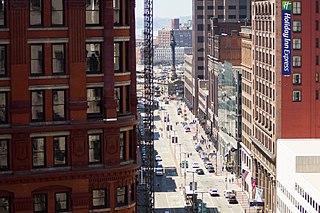
Euclid Avenue is a major street in Cleveland, Ohio. It runs northeasterly from Public Square in Downtown Cleveland, passing Playhouse Square and Cleveland State University, to University Circle, the Cleveland Clinic, Severance Hall, Case Western Reserve University's Maltz Performing Arts Center, Case Western Reserve University and University Hospitals Case Medical Center. The street runs through the suburbs of East Cleveland, Euclid, and Wickliffe, to Willoughby as a part of U.S. Route 20 and U.S. Route 6. The HealthLine bus rapid transit line runs in designated bus lanes in the median of Euclid Avenue from Public Square to Louis Stokes Station at Windermere in East Cleveland.
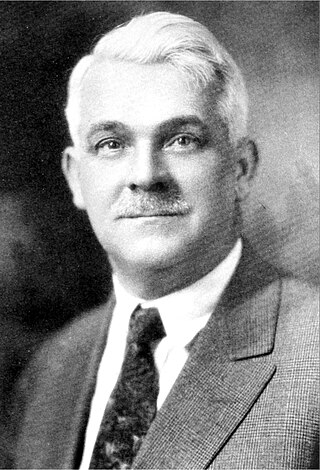
Thomas White Lamb was a Scottish-born, American architect. He was one of the foremost designers of theaters and cinemas in the 20th century.

Karamu House in the Fairfax neighborhood on the east side of Cleveland, Ohio, United States, is the oldest African-American theater in the United States opening in 1915. Many of Langston Hughes's plays were developed and premièred at the theater.

Playhouse Square is a theater district in downtown Cleveland, Ohio, United States. It is the largest performing arts center in the US outside of New York City. Constructed in a span of 19 months in the early 1920s, the theaters were subsequently closed down, but were revived through a grassroots effort. Their renovation and reopening helped usher in a new era of downtown revitalization in Cleveland, and was called "one of the top ten successes in Cleveland history."

Downtown Cleveland is the central business district of Cleveland, Ohio. The economic and symbolic center of the city and the Cleveland-Akron-Canton, OH Combined Statistical Area, it is Cleveland's oldest district, with its Public Square laid out by city founder General Moses Cleaveland in 1796.

Richmond Town Square was a super regional shopping mall known locally as 'Richmond' or 'Richmond Mall,' located in Richmond Heights, Ohio, a suburb of Cleveland, at the intersection of Richmond Road and Wilson Mills Road. Opening September 22, 1966 as Richmond Mall, developed by famous mall developer Edward J. DeBartolo, Sr. Original anchors were Sears and JCPenney, alongside a Loews Theater and Woolworths. The mall included in-line tenants such as Richman Brothers, and Winkelman's.

The Connor Palace, also known as the Palace Theatre and historically as the RKO Palace, is a theater located at 1615 Euclid Avenue in Downtown Cleveland, Ohio, part of Playhouse Square. The theater opened in 1922, as Keith's Palace Theatre after B. F. Keith, founder of the Keith-Albee chain of vaudeville and movie theaters. It was designed by the Chicago architectural firm of Rapp and Rapp in the French Renaissance style, and originally housed live two-a-day vaudeville shows. The $2 million theater opened in the Keith Building on November 6, 1922, seating 3,100. The interior featured Carrara marble and 154 crystal chandeliers, and the main lobby, dubbed the "Great Hall," was decorated with over 30 paintings.

The Mimi Ohio Theatre is a theater on Euclid Avenue in downtown Cleveland, Ohio, part of Playhouse Square. The theater was built by Marcus Loew's Loew's Ohio Theatres company. It was designed by Thomas W. Lamb in the Italian Renaissance style, and was intended to present legitimate plays. The theater opened on February 14, 1921, with 1,338 seats. The foyer featured three murals depicting the story of Venus, and the balcony contained paintings of Arcadia. Throughout the 1920s, the Ohio had a stock company and hosted traveling Broadway plays.

The Keith Building is a skyscraper in downtown Cleveland, Ohio's Playhouse Square theater district. The Keith is 272 feet tall and 21 stories, and houses the Palace Theater, a former flagship theater of the Keith vaudeville circuit. As of 2017, the renovated building is in use as an office tower.

The Standard Building,, is a high-rise apartment building located at the southwest corner of Ontario Street and St. Clair Avenue in downtown Cleveland, Ohio. Rising to a height of 282 feet, the Standard Building was the second tallest building in Cleveland when it was completed in 1925. Its north and east facades are clad in cream-colored terra cotta with a recurring starburst motif. The south face, which can be seen from Public Square, is unadorned and windowless. It was designed by Knox and Elliot architects, and was built for $7 million. It was built by the Brotherhood of Locomotive Engineers and Trainmen who owned the building until 2014, when it was sold to Weston, Inc.

The Allen Theatre is one of the theaters in Playhouse Square, the performing arts center on Euclid Avenue in downtown Cleveland, Ohio. It was originally designed as a silent movie theater by C. Howard Crane and opened its doors on April 1, 1921, with a capacity of more than 3,000 seats. The first show was of the movie Her Greatest Love, and featured Phil Spitalny and his 35 piece orchestra as live performers. The theater was designed in the Italian Renaissance style and was one of the few "daylight atmospheric" theaters in the country, with a ceiling painted to resemble the open daylight sky. In the lobby, a rotunda was built to resemble the Villa Madama in Rome. The ceiling of the rotunda was decorated with Renaissance-style figures from an unknown artist's imagination which greeted cinema patrons for decades.
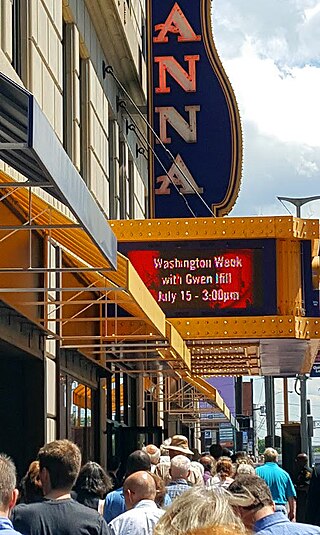
The Hanna Theatre is a theater at Playhouse Square in downtown Cleveland, Ohio, United States. It is one of the original five venues built in the district, opening on March 28, 1921. The Hanna Theatre reopened in 2008 as the new home of Great Lakes Theater Festival after a major renovation by the classic theater company.

The Cleveland US Bank Centre building is a high-rise located at 1350 Euclid Avenue in Cleveland, Ohio. Located in the heart of Cleveland's Theater District, the building was formerly known as Renaissance Center. It is the third tallest building in the district after the 1922-built 272 foot Keith Building and the 2020-built 396 foot apartment building, The Lumen.
The Helen Lab Theatre is a theater on Euclid Avenue in downtown Cleveland, Ohio, part of Playhouse Square. The smallest of three venues used by the Cleveland State University Department of Theatre and Dance and Cleveland Play House.

The Akron Civic Theatre is a theater in Akron, Ohio. It is one of only five remaining atmospheric theatres designed by John Eberson in the United States and is an excellent example of the great movie palaces of the 1920s. The Akron Civic Theatre is the last remaining theater of 11 opened by Marcus Loew, founder of the Loew's theater chain. The Civic is located on South Main Street in Akron and can seat 3,000 people. The theater has been exhibiting shows and special events for 94 years.

The Hippodrome Theater was located at 720 Euclid Ave in Cleveland, Ohio. In its day, it was a very lavish theater and ranked as one of the world's greatest playhouses. Performers appearing at the Hipprodome included Enrico Caruso, Sarah Bernhardt, W. C. Fields, Will Rogers, Al Jolson, and John McCormack. The auditorium had two balconies and seating for 3,548.
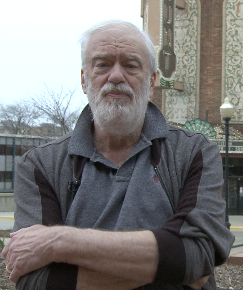
Ray Shepardson was a theatre restoration specialist and theatre operator credited by many with beginning the trend toward restoring old unused movie theaters into economic engines for their communities. He is the founder of the Playhouse Square association in Cleveland and is recognized as the visionary that helped motivate the creation of one of the nation's largest performing arts districts. He was involved in forty restorations throughout his career and operated several theaters after their restoration.
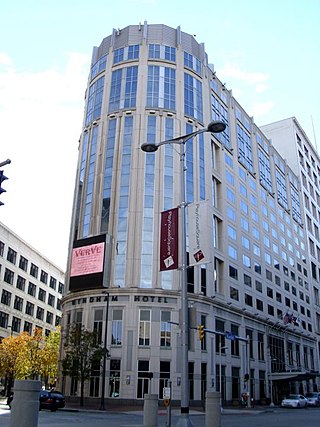
The Crowne Plaza Cleveland at Playhouse Square is a mid-sized, 14-story Crowne Plaza hotel in downtown Cleveland's Playhouse Square district, located at the intersection of Huron Road and Euclid Avenue. Originally known as the Wyndham Cleveland at Playhouse Square, the structure helped to complete the revitalization of Playhouse Square. It changed brand names in August 2017.
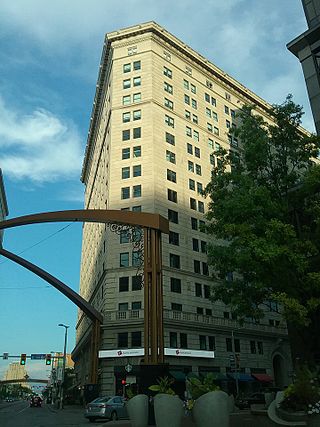
The Hanna Building is a historically renovated high-rise in downtown Cleveland's Theater District on the corner of East 14th Street and Euclid Avenue. The building stands 194 feet high and rises to 16 stories. It was built in 1921 and was added to the National Register of Historic Places in 1978. The Hanna is part of the Playhouse Square historic property portfolio and features many of the same features such as news tickers, billboards, and decorative elements as the other "theatrical" buildings in the locale. The Hanna is highly recognizable on the Playhouse Square and is currently the third tallest building in the Theater District behind the B.F. Keith and the US Bank Centre. Like many buildings of the era, the Hanna sits in an oblong fashion in relation to the street grid and runs parallel to the roadways of Euclid Avenue and East 14th Street, respectfully.





















